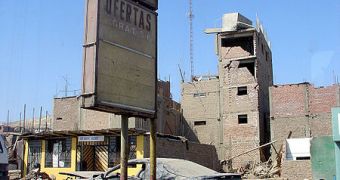Scientists at the University of Southern California (USC) College of Letters, Arts and Sciences say that they have just finished developing a new tool for forecasting large earthquakes. While plagued with uncertainties, just like all the other warning methods, the new one is also a lot more specific, in that it focuses on a single factor – stresses. These are tensions that build up underneath the ground, at designated locations that have already been identified in previous studies. A paper detailing the new technique appears as the third in a series, published in the December 3 online issue of the respected scientific journal Nature.
“One of the key aspects in forecasting of earthquakes is stresses. The findings in the three papers help identify locations that are highly stressed from readily available earthquake catalogs,” USC expert Danijel Schorlemmer, who is the senior author of the new paper, explains. He is also the first author of the other two papers on this issue, which were published in Nature as well, in 2005. The expert underlines the fact that the timing of future earthquakes will remain anyone's guess, but adds that the new method will allow for danger levels to be elevated in time, which may allow millions of people to be evacuated from risk zones, before massive tremors strike.
What Schorlemmer and his colleagues did was finding a way of measuring the underground stress levels indirectly. By analyzing the relative frequency, as well as the aftershock patterns of small- to medium-sized earthquakes in an area, the team was able to infer the buildup of stress over the entire region, without having to actually install monitoring equipment across unstable fault lines. “We are observing the little aftershocks all over California, deriving the state of stress and trying to predict the future main shocks. [The method] is not perfect. It's the only proxy (for stress) we could come up with so far,” the team leader reveals. The technique is currently undergoing model testing at the Collaboratory for the Study of Earthquake Predictability (CSEP).
“This study provides new insights about how forces within Earth's crust control seismic processes, and we should be able to use this information to improve our ability to forecast earthquakes,” Thomas Jordan says. He is the director of the USC-based Southern California Earthquake Center, and also the initiator of the CSEP international project. Schorlemmer's coauthors are first author Clement Narteau, of the Institut de Physique du Globe (IPG), in Paris, Svetlana Byrdina of IPG, and Peter Shebalin of IPG and the International Institute of Earthquake Prediction Theory and Mathematical Geophysics, in Moscow.

 14 DAY TRIAL //
14 DAY TRIAL //